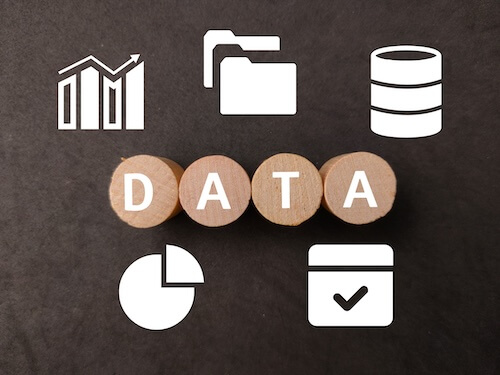An Extensive Guide to the Cloud Migration Strategy Lift and Shift
The cloud migration strategy lift and shift is a simple way to migrate your data and applications to the cloud. Contact Cloudficient for a quote...
Cloud migration can take many forms. While there are similarities between methods, how you prepare, execute, and review ...
Cloud migration can take many forms. While there are similarities between methods, how you prepare, execute, and review each strategy varies. Companies must have a firm understanding of all cloud migration strategies to make a sound decision between them. Coincidentally, the top six strategies begin with the letter "R," thereby creating the 6 Rs of cloud migration.

The 6 Rs each offer unique approaches to transferring your workloads to the cloud. Review each one carefully and use your organizational goals as a benchmark for the right solution.
Rehosting, often called "lift-and-shift," moves applications and data to the cloud without making changes. It's a cost-effective and efficient migration strategy.
An example of rehosting is a company that initially had an on-premises data center for its e-commerce website. In rehosting, it moves the existing website to a virtual cloud-based environment without modifying the underlying code. This allows the company to maintain the same operational procedures while benefiting from the cloud's scalability.
Rehosting offers a quick path to the cloud, but it’s only optimal for some applications or workloads. Assess each application's compatibility with the cloud environment before choosing this strategy.
Replatforming is often called the "lift-and-tinker" method. Unlike rehosting, which is a like-for-like migration, re-platforming involves making slight changes to leverage the cloud’s capabilities. You reap tangible benefits of the cloud without the high cost and risk of significant re-architecting.
For instance, consider a software company with an existing application running on a traditional relational database. The company could re-platform by migrating the application to a cloud platform like Microsoft Azure. With a few tweaks, it can take advantage of automation or advanced search features.
Although the re-platforming strategy demands more effort, horizontal scaling can deliver better benefits than rehosting and other cloud migration strategies. Consider the cost versus benefits trade-offs before making a final decision.
Refactoring, or re-architecting, involves reimagining the architecture and development using cloud-native features. This usually stems from a strong business requirement to add features or reach performance levels that the traditional environment can’t provide.
For example, consider a media company that uses traditional architecture for its video streaming service. As the company grows and the demand for its service increases, it might refactor its application into a microservices architecture.
This cloud adoption change allows each part of the application to scale independently. It improves performance and the user experience during peak viewing times.
Repurchasing, or the "drop-and-shop" approach, involves moving from a traditional license-based software model to a cloud-based Software as a Service model. In this strategy, organizations replace or upgrade an existing application by buying a cloud-based solution.
Consider a company using an on-premise customer relationship management system that requires a lot of maintenance and manual updates. After reviewing cloud migration strategies, the company moved to Salesforce to simplify its tech stack and take advantage of more advanced features.
While it may sound simple, the repurchasing strategy requires careful consideration of the cost and functionality. You also need to budget for staff training on the new product.
The retiring strategy involves identifying IT assets that are no longer useful or cost-effective and decommissioning them. This strategy can eliminate unnecessary costs and boost efficiency. Companies achieve it by first auditing the IT portfolio and identifying areas that are prime candidates for resource reallocation.
For instance, a business might be maintaining several legacy applications that perform similar functions. Some of these legacy applications only have a few users, and existing applications can serve their needs. In such cases, retiring these applications can conserve resources better than using other cloud migration strategies.
It's important to note that while retiring can provide immediate cost savings, it requires careful planning and execution. Organizations must ensure that retiring any IT asset does not disrupt business operations or result in losing important data.
Amazon added the retaining cloud migration strategy. In this case, some applications or workloads remain on premises or in the current cloud ecosystem. This strategy is typically employed when an application is too complex, costly, or sensitive to migrate. The decision to retain doesn't mean an application will never move to the cloud. Companies can revisit their decision in the future.
Consider an organization with a highly sensitive data application subject to stringent regulatory compliance requirements. Migrating this application to the cloud may introduce compliance risks. The company can avoid complications by retaining the data assets until it has a better migration solution.
Retaining can offer several benefits, such as enabling organizations to prioritize their most critical workloads for migration. It reduces immediate migration costs and risks and provides additional time to plan and execute more complex migrations.
Cloud migration is a formal business process that requires careful planning and documentation. You should also consider the risks of moving data and plan organization contingencies. Use these cloud migration tips to get started.
Adequate planning and assessment begins with a comprehensive evaluation. Review the current IT environment and design an effective migration strategy that aligns with business objectives.
Here are some of the main steps to take:
Adequate planning and assessments identify potential roadblocks, ensure proper resource allocation, and set realistic timelines. This approach can significantly reduce downtime and sets the stage for a successful cloud migration.
Backup and recovery safeguards your data during all cloud migration strategies by creating copies. In the event of lockouts, accidental deletions, or ransomware, you can restore the data or restore the system to bug-free settings from a previous date.
Follow these steps:
Having a backup and recovery plan is vital for business continuity. It protects your valuable data assets and provides peace of mind.
Testing and monitoring ensure all migrated applications, workloads, and data function as expected in the cloud environment. The IT team must confirm that they continue to deliver the desired performance and security standards regardless of the cloud migration strategies used.
This generally takes place in the following stages:
Testing and monitoring allow for the early detection and resolution of issues, thereby minimizing disruption to users and business operations. They also provide valuable data to optimize cloud resources and manage costs.
License management is a crucial aspect of cloud migration strategies that is often overlooked. It involves managing and optimizing the software licenses for migrating applications to the cloud. This ensures the company complies with software licensing agreements while avoiding unnecessary costs.
Here are the steps for effective license management:
Managing your licenses effectively can help you avoid legal and financial penalties associated with non-compliance. It can also prevent overpayment for licenses you no longer need in the cloud environment.
Documentation is a vital yet often undervalued part of the cloud migration process. It involves recording all the details of your cloud migration strategy, including initial assessments, plans, designs, configurations, test results, and important decisions.

These are the key steps for documenting cloud migration strategies:
Documentation is crucial because it provides a clear record of the team's actions, who took them, and why. This can be beneficial for troubleshooting, auditing, and planning future migrations.
Our experienced team of professionals helps companies with 5,000-plus users to upgrade to the cloud. We work closely with managers and IT teams to determine which of the six cloud migration strategies is best for your needs. Contact the Cloudficient team today for a quote.
With unmatched next generation migration technology, Cloudficient is revolutionizing the way businesses retire legacy systems and transform their organization into the cloud. Our business constantly remains focused on client needs and creating product offerings that match them. We provide affordable services that are scalable, fast and seamless.
If you would like to learn more about how to bring Cloudficiency to your migration project, visit our website, or contact us.
The cloud migration strategy lift and shift is a simple way to migrate your data and applications to the cloud. Contact Cloudficient for a quote...
Moving data to the cloud can be difficult, but there are many types of cloud migration. Cloudficient explains how to customize a solution for any...
What is refactoring in cloud migration? We explain how it works, why you need it, and how it helps you preserve your legacy system.